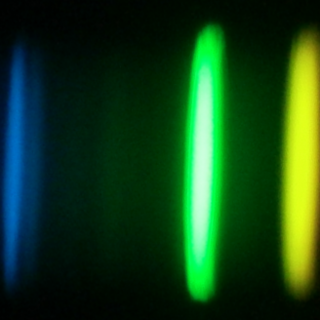Bibcode
Smith, Verne V.; Bizyaev, Dmitry; Cunha, Katia; Shetrone, Matthew D.; Souto, Diogo; Allende Prieto, Carlos; Masseron, Thomas; Mészáros, Szabolcs; Jönsson, Henrik; Hasselquist, Sten; Osorio, Yeisson; García-Hernández, D. A.; Plez, Bertrand; Beaton, Rachael L.; Holtzman, Jon; Majewski, Steven R.; Stringfellow, Guy S.; Sobeck, Jennifer
Bibliographical reference
The Astronomical Journal
Advertised on:
6
2021
Citations
138
Refereed citations
131
Description
The updated H-band spectral-line list (from λ15000-17000) adopted by the Apache Point Observatory Galactic Evolution Experiment (APOGEE) for the SDSS-IV Data Release 16 (DR16) is presented in this work. The APOGEE line list is a combination of atomic and molecular lines, with data drawn from laboratory, theoretical, and astrophysical sources. Oscillator strengths and damping constants are adjusted using high signal-to-noise, high-resolution spectra of the Sun, and α Boo (Arcturus), as "standard stars." Updates to the DR16 line list, as compared to the previous DR14 version, include the addition of molecular H2O and FeH lines, as well as a much larger (by a factor of ∼4) atomic line list, including a significantly greater number of transitions with hyperfine splitting. More recent references and line lists for the crucial molecules, CO and OH, as well as for C2 and SiH, are also included. In contrast to DR14, DR16 contains measurable lines from the heavy neutron-capture elements cerium (as Ce II), neodymium (as Nd II), and ytterbium (as Yb II), as well as one line from rubidium (as Rb I), which may be detectable in a small fraction of APOGEE red giants.
Related projects

Nucleosynthesis and molecular processes in the late stages of Stellar Evolution
Low- to intermediate-mass (M < 8 solar masses, Ms) stars represent the majority of stars in the Cosmos. They finish their lives on the Asymptotic Giant Branch (AGB) - just before they form planetary nebulae (PNe) - where they experience complex nucleosynthetic and molecular processes. AGB stars are important contributors to the enrichment of the
Domingo Aníbal
García Hernández

Chemical Abundances in Stars
Stellar spectroscopy allows us to determine the properties and chemical compositions of stars. From this information for stars of different ages in the Milky Way, it is possible to reconstruct the chemical evolution of the Galaxy, as well as the origin of the elements heavier than boron, created mainly in stellar interiors. It is also possible to
Carlos
Allende Prieto